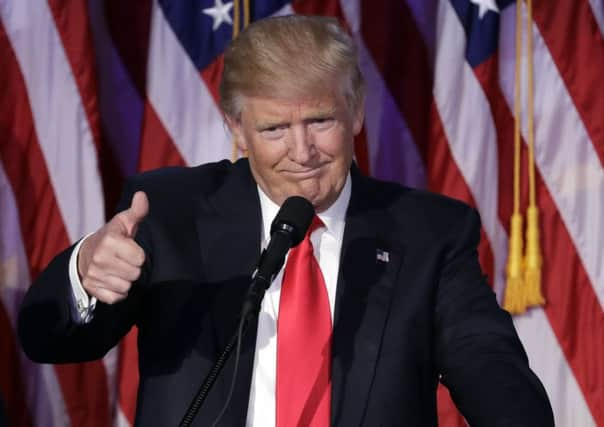'˜Clinton won 2.6m more votes but lost election due to a deal in 1787'


Trump won 46.3% of the popular votes made by ordinary Americans – 1.9% less than Clinton’s 48.2% – yet he still won the presidential race, a factor which fed into street protests in the US and has in part resulted in ongoing recounts of three states.
Clinton won 65.4 million popular votes compared to Trump’s 62.8 million, however the recount is highly unlikely to put her in the Oval Office, according to Dr Stefan Andreasson, a Senior Lecturer in Comparative Politics at Queen’s University Belfast.
Advertisement
Hide AdAdvertisement
Hide AdShe lost with a majority of votes because an American president is not chosen directly by the people but by a group of officials known as the electoral college.
Technically, on election day Americans elect 538 officials to the electoral college, who then elect the president. Trump took many by surprise with 306 electoral college votes to Clinton’s 232.
Dr Andreasson says the US is the only country where the executive president or head of government is indirectly elected in this manner.
The electoral college was created when the ‘separation of powers’ in government was considered a critical political doctrine, he says.
Advertisement
Hide AdAdvertisement
Hide Ad“The electoral college was created for the purpose of having some degree of separation between electorate and executive office, and also to get electors to cast votes in a manageable way at a time of very different logistics and transportation,” he said.
James Madison (1809-1817), a key author of the US constitution and 4th US President, had a strong influence on the document and was in turn greatly influenced by the ideas of French political philosopher Montesquieu, who was very focused on the separation of powers, he notes.
Americans wished to create a democracy in which the people were sovereign but they were also wary of “too much direct democratic influence, including the ‘tyranny of the majority’,” he added.
“In that context, the system of checks and balances between the three branches of the federal government, and an electoral college electing presidents rather than the public directly, fitted into that understanding of how to prudently give the people power but also include safeguards.”
Advertisement
Hide AdAdvertisement
Hide AdHe adds: “I don’t think anyone can make a strong case that the Electoral College is very relevant today, and indeed many Americans are unhappy with it.”
However, it is enshrined in the constitution and several attempts to change this have failed; the reason is that each US state is granted electoral college members in proportion to their population – but also get two additional electors irrespective of their size.
“This means that the 25 smaller states enjoy a degree of over-representation.”
This is a legacy of ‘the Great Compromise’ struck at the Second Constitutional Convention in Philadelphia in 1787, which addressed fears of both large and small states in terms of their representation.
Advertisement
Hide AdAdvertisement
Hide AdA constitutional amendment to change the situation is unlikely to happen because the 25 smaller states are never likely to vote for a reduction in their powers.
“Another reason for the creation of the college was manageability of paper ballots in the 18th century. It was simply not as easy to count and aggregate votes across the vast area of even the original 13 states in the late 18th Century America, given poor infrastructure and the like, as it is with modern communications and related technology.”
At present the American Green Party-backed recount campaign is focused on three states that Mr Trump won – Wisconsin, Michigan and Pennsylvania.
However even the Clinton camp does not believe there is any serious chance the recounts could put their candidate in the White House, Dr Andreasson added.